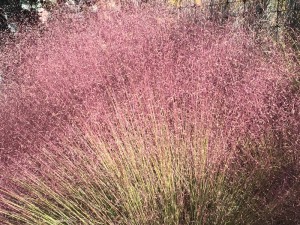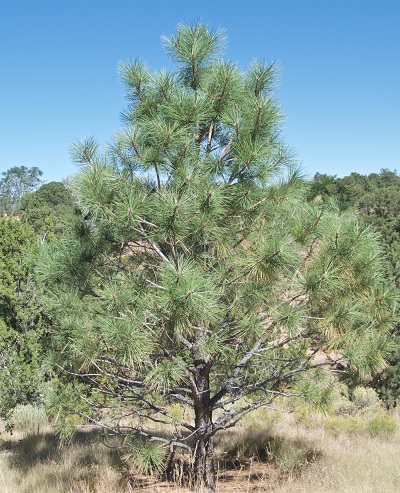September 2018
By Scott Canning, Horticulture and Special Projects Director
If you have not thrown in the trowel for the year, I salute you. And your continued work in the garden will pay future dividends. Remember that terrifying adage: “One year to seed; seven years to weed!”
Grooming the garden and some light dead-heading can still be done, but no more hard pruning (of course, don’t dead-head anything you want to set seed for garden interest or seed saving). And you should have stopped fertilizing the garden last month; see August. Two ways to encourage new growth is to prune and to feed; any growth that you “push” now by feeding or pruning will still be soft and not hardened off when the killing freeze comes, and will be a waste of your time and fertilizer.

‘Autumn Embers’ muhly grass (photo: Joan Grabel)
Now is a great time to assess your garden: make notes of successes and where you want to make changes. The annual Fall Plant Sale (Friday Members Preview, Sept. 14, Saturday open to public!) is a great place to start. There will be plenty of horticulture advice, ornamental grasses, perennials, and shrubs will be available.
It’s a great time to lift and divide perennials; it’s getting a little late for bearded iris, it’s a perfect for daylilies, it’s still good for peonies, but don’t lift and divide grasses now. Grasses are coming into their showy season so don’t mess with them now. For most grasses lifting and dividing is most successful in early spring, when there’s some but not a lot of top growth and the roots are actively growing.

Crops in the agriculture terraces of Ojos y Manos Garden.
While making notes, photograph or map your vegetable garden – you want to know what was where next spring, when you want to rotate crops. Look into crop rotation, avoiding successive crops of nightshades and crucifers in the same plot. (Nightshades are tomatoes/peppers and chiles/tomatilloes/eggplant, etc. and crucifers are all the cabbage-y things; brocco-li/arugula/cauliflower/kale, etc.) These two crop families very quickly change the soil and establish pest populations, so it’s best to move them every year, at a bare minimum.
As you harvest and clear areas in the veggie patch, plant some last-minute, direct-sow crops like spinach and arugula. And in other areas, plant a cover crop, except where you know you will be planting first-of-the-season crops like peas. Cover those areas with compost and/or mulch, to protect the soil.

Ponderosa pine (photo by Janice Tucker)
September is one of the best months to plant or transplant conifers. Top growth is hardened off and the roots are actively growing, and you don’t have to get them through our miserable Junes. Speaking of conifers, don’t freak if you start to notice brown needles. If it’s the oldest needles (farthest down the stem toward the roots—these needles are usually 3-5 years old) are browning and dropping, that is normal for many conifers in the fall.
Finish ordering and start planting fall-planted bulbs. Be extra-vigilant with lilies: They want to be planted just as soon as you can get them in the ground. Consider adding a few species crocus and species tulips—they should be better known, many are dryer-growing gems.


